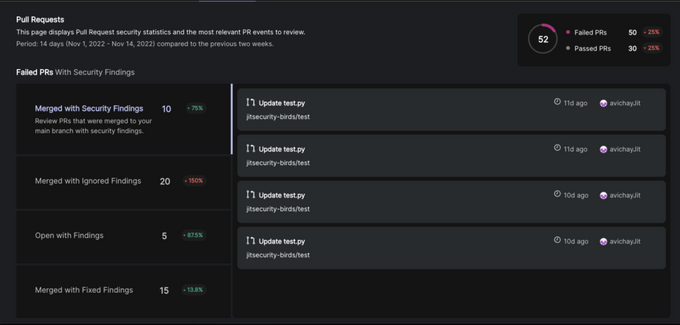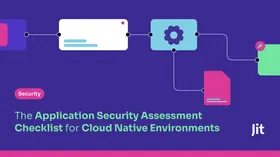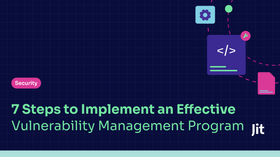7 SaaS Security Best Practices for 2025
Published March 24, 2025

SaaS apps make life easier until they don’t. They’re quick to deploy, seamlessly integrate with your workflow, and scale effortlessly. But that convenience comes at a price: security gaps that are easy to overlook. The more apps you add to your stack, the harder it becomes to keep track of where sensitive data flows, who has access, and what risks are lurking beneath the surface.
93% of security leaders have boosted their SaaS security budgets after a wave of breaches shook the industry. While each SaaS app might function as an “add-on” to your workflow, you can’t treat security the same way. The “set it and forget it” approach is a costly mistake that hinders your ability to respond to issues as they arise. Instead, SaaS security must be deeply embedded in your ecosystem, continuously monitored, and actively managed.
Understanding SaaS Security: What Does It Entail?
SaaS security protects your SaaS applications, including stored data and user access, even though you don’t own or control the underlying infrastructure. While providers handle servers, uptime, and maintenance, you are still responsible for securing the data you add to each SaaS platform and its use.
To do this effectively, you need a mix of technical controls and processes that address the security risks unique to shared and distributed cloud environments. You’ll need a variety of specialized tools to achieve robust end-to-end security, including:
Authentication and authorization tools for secure user and API access;
Identity and access management (IAM) to manage user permissions and roles;
Code and dependency security tools to scan codebases and third-party tools;
Configuration scanning tools to automatically detect security misconfigurations;
Container scanning tools to detect vulnerabilities within container images;
Secrets management for securely handling credentials and sensitive data.
How is SaaS Security Changing?
SaaS security is shifting in response to a perfect storm of trends. For starters, attackers are actively weaponizing new technologies and exploiting modern workflows. Cybercriminals now use AI in devastating ways, like automating credential harvesting from misconfigured public repositories and cloud resources. They use those stolen credentials to hijack environments for data exfiltration.
Supply chain attacks have also pivoted to target SaaS ecosystems. Third-party integrations like APIs and open-source libraries multiply the risk of a breach. Only one compromised API or vulnerable library can poison downstream applications and lead to a large-scale breach.
When you consider this in the context of microservices, serverless functions, and multi-cloud setups, you get an attack surface that is very rapidly expanding and difficult to protect. Even DevOps pipelines aren’t safe. While automated CI/CD workflows are efficient, it’s easy to accidentally deploy compromised code if security checks aren’t enforced at every stage.
Why Do You Need to Invest in SaaS Security Best Practices?
AI-driven attacks, brittle supply chains, architectural complexity, and decentralized access are not individual risks. They are colliding in ways that demand your urgent action. But if you put the effort into building adaptive SaaS security best practices, it can pay off via:
- Enhanced data protection: SaaS platforms house sensitive information like customer records, intellectual property, and financial details. Implementing data security policies and measures like end-to-end encryption and advanced access controls protects the data and the integrity of automated workflows that depend on it.
- Proactive Threat Detection and Incident Response: Cyber attacks strike with alarming speed and subtlety. Best practices help you spot anomalies early. If the logs, monitoring, and incident response plans are ready, you can effectively trace, contain, and fix the problem quickly to minimize damage and downtime.
- Secured Third-Party Integrations: SaaS applications don’t live in isolation. They’re tied to APIs, plugins, and external tools. Securing their connections to these tools prevents a vulnerable link from toppling your ecosystem.
- Improved Compliance and Risk Management: Regulations are tightening globally. With compliance a critical focus, proactive security practices can help you meet standards like SOC 2 or HIPAA more easily.
7 SaaS Security Best Practices for 2025
1. Shift Left with DevSecOps
If your team is shipping code daily, vulnerabilities will slip through unless security checks are integrated into every step – and the earlier, the better. Using automatic static (SAST) and dynamic (DAS) tools integrated with your CI/CD pipelines provides a direct channel for rapid developer feedback. Instead of reacting to security concerns after deployment, you are immediately alerted to insecure coding practices and vulnerable dependencies. This allows you to effectively remediate problems as you code.
Jit’s Product Security Platform offers full-stack scanning coverage for your codebase. It orchestrates tools like Semgrep, GoSec, OSV-scanner, and more and integrates them neatly into your developer environment. If someone accidentally codes a vulnerability and tries to merge it, Jit automatically creates a pull request that contains security findings and logs all vulnerabilities in a prioritized backlog.
2. Visualize Sensitive Data Flows with Threat Modeling
Look into threat modeling and map out your application's attack surface during the design stage to understand how data flows through your application. This allows you to code around potential weaknesses early when fixes are cheaper and less disruptive. It also helps you prioritize security for the most critical paths and data points. Consider questions like:
Where’s the sensitive data going?
Who's accessing it?
What external systems are you touching?
Visual models like OWASP Threat Dragon create a common language between developers and security teams. When everyone sees the same risk map, it’s easier to agree on which threats need the most attention and decide how to mitigate them.
2. Advanced Identity and Access Management (IAM) with Dynamic Authorization
A rigid access model is a liability when users log in from all over the world and on all kinds of devices, often bouncing between multiple cloud tools. Attackers love to target static credentials because they can easily hijack a session and escalate access once they obtain a leaked password.
Rather than applying blanket permissions, follow the principle of least privilege to ensure users only have access to what they truly need. For instance, developers may require temporary administrative rights for deployments but shouldn’t retain them all day, and contractors should never have access to financial data.
Use a centralized IAM tool to enforce access controls and mandate MFA across all accounts. Then, strengthen security with dynamic authorization. For example, AWS IAM conditionals can assess factors like user location, device health, and time of day before granting access.
3. Zero Trust Network Access (ZTNA) and Micro-Segmentation
The traditional "inside" network concept no longer applies to SaaS. Users, devices, and applications are spread across various clouds and locations, making it crucial to avoid relying on inherent trust for users inside your network. There is no perimeter to protect anymore.
Implement Zero Trust Network Access (ZTNA) with tools like Cloudflare Access or Zscaler Private Access. These tools continuously verify identity and context, ensuring access is granted to specific applications rather than entire networks. Strengthen ZTNA with software-defined networking (SDN) to segment your environment into smaller, isolated parts, reducing the risk of lateral movement.
For example, you can segment tenant environments using a virtual network for each customer to separate their API endpoints and data layers. Even if one tenant’s resources are compromised, the breach remains contained.
4. Automated and Continuous Cloud Configuration Monitoring
Misconfigurations are one of the most common sources of cloud breaches. A misconfigured security group that exposes critical ports or an IAM policy with wildcard permissions can easily lead to sensitive data exposure. With teams deploying as fast as they are, manual configuration audits can’t keep up with infrastructure-as-code (IaC) templates, Kubernetes manifests, and IAM policies, as attackers can scan these files in hours. You need automated, continuous monitoring to stay ahead and catch mistakes immediately.
Tools like KICS, CloudSploit, and even native services like AWS Config can scan your cloud environment for deviations from best practices and other vulnerabilities. You can create custom security policies to fit your organization’s needs. For example, you might restrict IAM access to specific IP ranges, block untrusted hostPath volumes in Kubernetes pods, or enforce encryption for every storage bucket.
5. API Security with OAuth 2.0 and OpenID Connect (OIDC)
APIs are open and accessible to connect microservices, third-party integrations, and mobile applications for modern SaaS platforms. However, this openness inherently increases the attack surface. Exposed endpoints that handle tenant data are prime targets for token theft and replay attacks. Including proper authorization and authentication measures in your API security checklist is essential.
Use a combination of OAuth 2.0 and OIDC to handle authorization and authentication for your API connections. OAuth hands out short-lived access tokens (15 to 60 minutes) that are scoped to specific tasks. OIDC adds an authentication layer to confirm user identity claims with digitally signed JWTs.
Choose an identity provider (IdP) like Auth0 or Okta to act as your authorization server. Set it up so your users hit the IDP’s login page with the Authorization Code Grant (you can do this quickly with a redirect). Then, configure your tokens with tight scopes, such as
read:tenant
(the token holder can read but not change data related to a tenant). Consider also adding token introspection endpoints if you have high-security resources. These specialized endpoints let servers confirm that a token is active and retrieve associated metadata (such as scopes or other claims) to make more informed access control decisions.
6. Automated Secrets Management with Fine-Grained Rotation Policies
Letting your credentials grow stale can become a significant security gap that risks sensitive tenant data. However, manually managing secrets like API keys, database credentials, and OAuth tokens is impractical at scale due to the number of third-party services required. Instead, you should automate secret rotation schedules to refresh your secrets continuously.
Consider the sensitivity and usage patterns of all critical secrets to understand what rotation policies you need. Then, pick a dedicated secrets management tool like Azure Key Vault or AWS Secrets Manager. Define policies at the secret level for fine-grained rotation rather than applying a one-size-fits-all schedule. For example, your high-sensitivity secrets might need to rotate every 24 hours, with the old secrets immediately invalidated.
7. Secure Container Architecture
Containers offer speed and scalability but can expose your environment to threats like container breakout, privilege escalation, supply chain attacks, data theft, or downtime without proper security if misconfigured or poorly designed.
Secure container architecture starts during the build stage. Use minimal base images (DockerSlim) and multi-stage builds to remove unnecessary tools and libraries. Automate vulnerability scans of your container images with tools like Trivy to identify vulnerabilities before deployment, and always digitally sign images to guarantee integrity.
Run containers as non-root, drop unused Linux capabilities, and apply seccomp profiles to restrict system calls. These hardening best practices reduce your attack surface before your containers hit production.
At the orchestration level, Kubernetes can automate container management and isolate workloads with separate namespaces, resources, and RBAC to prevent lateral movement in case of a breach. Incorporate real-time monitoring for your containers with tools like Falco to receive security alerts and catch anomalies when they occur.
Tomorrow’s Security Starts Today
To future-proof your SaaS security, you need continuous, proactive protection that evolves as rapidly as your environment. It’s time to embed best practices directly into your workflows. That includes shifting security left in your DevOps pipeline, dynamically controlling identities, continually monitoring your cloud configurations, and automating secrets rotation.
Jit operationalizes these best practices and many others, automatically scanning your code, dependencies, containers, and cloud setups to detect and prioritize vulnerabilities. It integrates with your developer tools to get actionable and prioritized fixes in real-time. With a range of powerful scanning tools, including Trivy, OSV-scanner, Semgrep, and Kubescape – you can efficiently eliminate threats that put your application at risk.
Ready to see it in action? Check out Jit’s homepage to get started!










